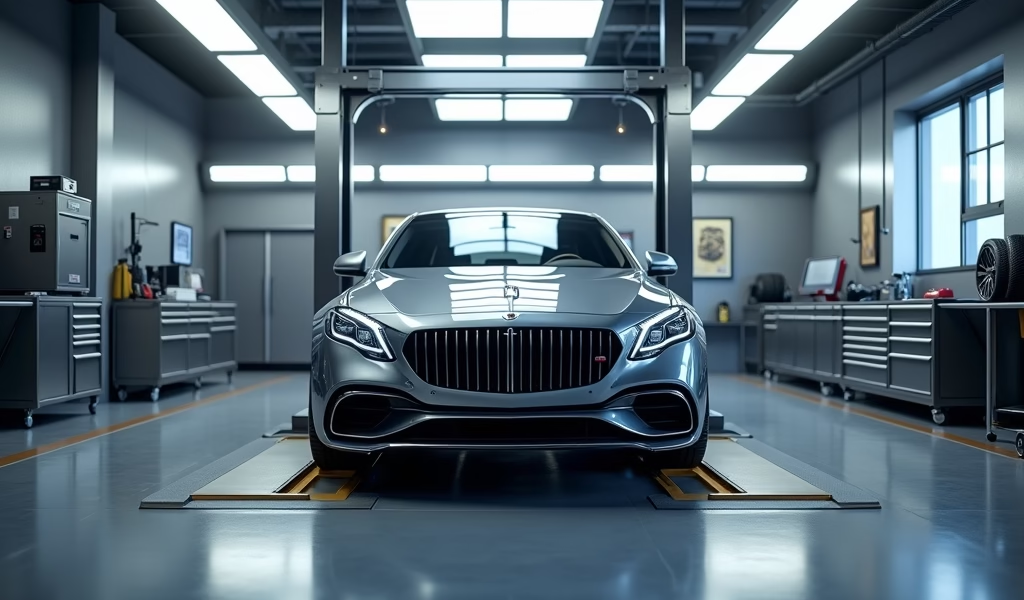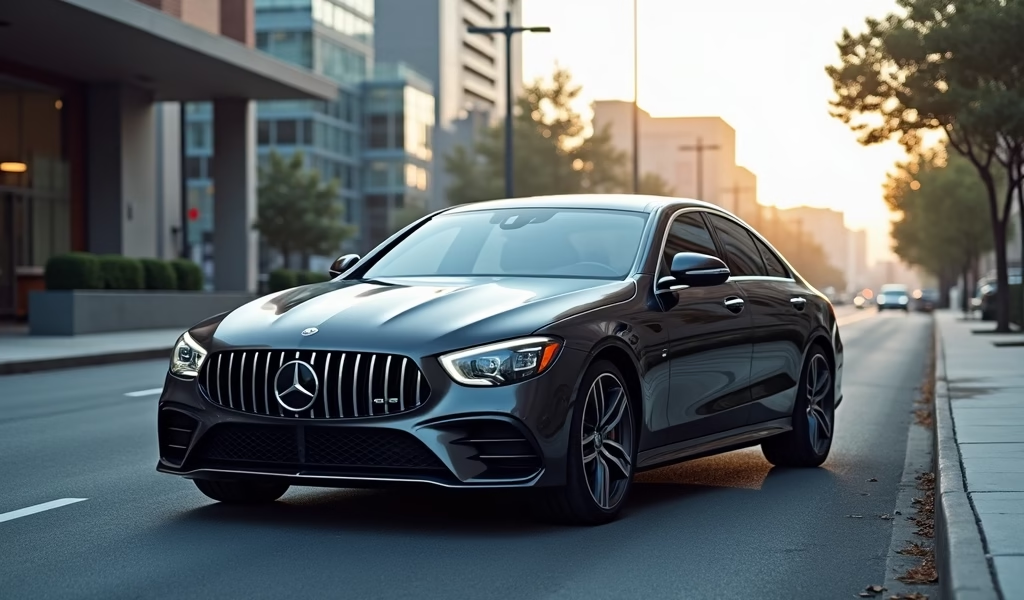Overview
Leasing offers lower monthly payments and regular vehicle upgrades but includes mileage limits and lacks equity building, while financing has higher payments but leads to ownership and potential long-term savings. The best choice depends on your personal driving habits, financial priorities, and whether you prefer driving newer vehicles regularly or keeping a vehicle long-term after it’s paid off.
# Lease vs. Finance: Which Vehicle Path Is Right for Your Wallet and Lifestyle?
In the journey of vehicle ownership, understanding the difference between lease and finance options is crucial. This comprehensive guide breaks down both approaches, helping you decide which fits your driving habits, budget, and long-term goals. From lower monthly payments with leasing to building equity through financing, we’ll navigate the road to your next vehicle decision together.
Table of Contents
- Understanding the Basics: Lease vs. Finance
- Leasing Explained: Borrowing for a Limited Time
- Financing Explained: The Path to Ownership
- Key Differences Between Leasing and Financing
- When Leasing Makes Sense for You
- When Financing Is the Better Option
- Financial Considerations: Breaking Down the Numbers
- Making Your Decision: A Practical Approach
- Conclusion: Choosing Your Vehicle Journey
- Frequently Asked Questions
Understanding the Basics: Lease vs. Finance
When you’re standing in that showroom, eyeing your dream car, two main paths lie ahead: leasing or financing. Both get you behind the wheel, but they work in fundamentally different ways.
Think of leasing as renting the vehicle for a set period. You’ll make monthly payments for the privilege of driving it, but at the end of the term (typically 2-3 years), you’ll return the keys and walk away. The payments are generally lower because you’re only paying for the vehicle’s depreciation during your lease period, not its entire value.
Financing a car means taking out a loan to purchase it outright. Your monthly payments will likely be higher than with a lease, but each payment builds equity. Once you’ve paid off the loan, the vehicle is yours free and clear—to keep, sell, or trade in as you please.
I’ve seen folks get confused about these options for years in my shop. Many come in thinking one is clearly better than the other, but the truth is more nuanced. Your best choice depends on your driving habits, financial situation, and long-term goals.

Leasing Explained: Borrowing for a Limited Time
Leasing a vehicle works a bit like renting an apartment. You’re paying for the right to use the car, but you don’t own it and won’t build equity. Your payments cover the vehicle’s depreciation during your term, plus interest (called the money factor in lease-speak) and fees.
Most leases run 24-36 months and include restrictions you should know about. There’s typically a mileage limit (often 10,000-15,000 miles annually), and you’ll need to keep the vehicle in good condition to avoid extra charges when you return it.
From the maintenance side, leasing has some advantages. Since you’re driving a newer vehicle, most major repairs should be covered under warranty. I rarely see lease customers dealing with expensive fixes—mostly just routine maintenance like oil changes and tire rotations.
When your lease ends, you have options. You can return the vehicle and lease something new, purchase the vehicle for its predetermined residual value, or simply walk away. This flexibility is why many drivers love leasing—it’s like getting a new car every few years without the hassle of selling your old one.
Key Leasing Terms to Know:
- Residual Value: The projected value of the vehicle at lease-end (determined at the beginning)
- Money Factor: The lease equivalent of an interest rate
- Cap Cost: The negotiated price of the vehicle
- Disposition Fee: The charge for returning and processing the vehicle at lease-end
Financing Explained: The Path to Ownership
When you finance a vehicle, you’re taking out a loan to purchase it outright. The lender fronts you the money, and you repay it with interest over time—usually 3-7 years. Each payment builds your equity in the vehicle until you own it free and clear.
The beauty of financing is that there are no mileage limits or wear-and-tear concerns (beyond normal care and maintenance). The car is yours to drive as much as you want and modify as you see fit. As a mechanic, I’ve seen countless financed vehicles with aftermarket exhaust systems, custom wheels, and performance upgrades—modifications that would violate most lease agreements.
Once you’ve paid off the loan, you’ll enjoy a period of payment-free ownership. This is when financing really starts to pay off financially. I’ve had customers drive their paid-off vehicles for 5+ years, saving tens of thousands in potential new car payments while just covering maintenance and occasional repairs.
Of course, financing means you’re responsible for all repairs once the warranty expires. But a well-maintained vehicle can run reliably for many years beyond that point. I’ve worked on plenty of 10-15 year old vehicles that still serve their owners well, long after they’ve been paid off.
Key Financing Terms to Know:
- Principal: The amount borrowed to purchase the vehicle
- Interest Rate: The cost of borrowing, expressed as a percentage
- Loan Term: The length of time to repay the loan
- Down Payment: The upfront amount paid to reduce the loan amount
Key Differences Between Leasing and Financing
Over my years helping customers maintain their vehicles, I’ve noticed distinct patterns between those who lease and those who finance. Here’s what separates these options:
Ownership
With leasing, you never own the vehicle—you’re essentially renting it long-term. With financing, you’re building ownership with every payment, eventually owning the vehicle outright.
Monthly Payments
Lease payments are typically 20-30% lower than finance payments for the same vehicle. Why? Because you’re only paying for the depreciation during your lease term, not the entire vehicle value.
Long-Term Costs
Though lease payments are lower initially, leasing costs more in the long run if you continually lease vehicles. Once a financed vehicle is paid off, you’ll have no payments while still having transportation.
Mileage Restrictions
Leases limit how much you can drive (typically 10,000-15,000 miles annually) with excess mileage penalties of 10-25 cents per mile. Financed vehicles have no mileage restrictions.
Vehicle Condition
Leases require you to maintain the vehicle in good condition, with charges for excessive wear and tear. With financing, while maintaining your vehicle is still important, there are no penalties for normal wear.
End of Term
When a lease ends, you must decide whether to return the vehicle, buy it, or lease another. When financing ends, you own the vehicle outright with the freedom to keep, sell, or trade it.
Early Termination
Ending a lease early can be costly, often requiring payment of all remaining lease payments. With financing, you can sell or trade the vehicle at any time, though you’ll need to pay off any remaining loan balance.
As a mechanic who’s seen both sides of this equation, I can tell you that the right choice isn’t universal. I’ve seen folks perfectly happy with both approaches—it really comes down to your priorities and circumstances.

When Leasing Makes Sense for You
After years in the service bay, I’ve noticed patterns in who tends to be happiest with leasing. You might be an ideal candidate for leasing if:
- You enjoy driving new cars with the latest features. Leasing puts you in a new vehicle every 2-3 years with the newest technology, safety features, and designs.
- You drive a predictable, moderate amount. If you consistently drive less than 12,000-15,000 miles annually, you’ll likely stay within lease mileage limits.
- You prefer predictable vehicle costs. With a lease, your monthly payment is fixed, and major repairs are typically covered under warranty.
- You use your vehicle for business. Leasing may offer tax advantages for business use (though you should consult with a tax professional about your specific situation).
- You don’t want the hassle of selling a car later. At lease-end, you simply return the vehicle to the dealership.
From what I’ve seen, professionals who value having a newer vehicle for client meetings, tech enthusiasts who want the latest features, and those who prefer lower monthly payments often gravitate toward leasing.
One customer, a real estate agent named Jim, leases because he needs a reliable, impressive vehicle to transport clients but doesn’t rack up excessive mileage. The predictable costs and regular upgrades work perfectly for his business needs and image.
Remember though, leasing is essentially paying for the steepest part of a vehicle’s depreciation curve. If long-term cost efficiency is your priority, leasing typically isn’t the most economical choice.
When Financing Is the Better Option
As someone who’s maintained vehicles throughout their life cycles, I’ve observed that financing tends to work better for certain drivers. Financing might be your better choice if:
- You drive more than average. High-mileage drivers (over 15,000 miles annually) often face expensive excess mileage charges with leases.
- You plan to keep your vehicle long-term. The financial benefits of financing really shine when you drive the vehicle for several years after paying it off.
- You want to customize your vehicle. Modifications like performance upgrades, custom wheels, or even simple changes like window tinting can violate lease agreements.
- You’re rough on vehicles. If you use your vehicle for work, outdoor adventures, or have kids and pets that create more than “normal” wear and tear, leasing might lead to end-of-term charges.
- You value ownership and building equity. With financing, each payment gets you closer to owning a valuable asset.
I’ve seen countless customers who’ve financed vehicles and kept them well past their loan terms. One fellow, a contractor named Mike, has been driving the same truck for 12 years. He paid it off after 5 years and has enjoyed 7 years without car payments. While he’s had to cover some repairs, the total cost has been far less than continuous payments on a new vehicle.
Buying a new car through financing means you’re in control of how long you keep it. With proper maintenance (which I always recommend regardless of how you acquire your vehicle), modern cars can easily last 15+ years and 200,000+ miles.
According to Consumer Reports research, today’s vehicles can last much longer than those from previous generations when properly maintained, making the long-term financial benefits of financing even more significant.
Financial Considerations: Breaking Down the Numbers
Let’s talk dollars and cents. While every situation is unique, here’s a general comparison to illustrate the financial differences between leasing and financing:
Example Scenario:
Consider a $30,000 SUV with these approximate terms:
Leasing (36-month term):
- Down payment: $2,000
- Monthly payment: $350
- Total paid over 36 months: $14,600
- End result: Return vehicle, no equity
Financing (60-month term):
- Down payment: $3,000
- Monthly payment: $500
- Total paid over 60 months: $33,000
- End result: You own a vehicle worth approximately $15,000
Looking at just the 36-month comparison, leasing seems much cheaper ($14,600 vs. $21,000 for the first 36 months of the loan). However, after 60 months, the financed option provides an asset, while continuous leasing would cost around $29,200 over 60 months with no asset to show for it.
The real advantage of financing appears after the loan is paid. If you keep the financed vehicle for 8 years total, those final 3 years have no payments, while leasing would continue to cost around $12,600 for those years.
I’ve explained this math to countless customers in my shop. The ones who keep their vehicles longest almost always come out ahead financially with financing, while those who prioritize driving newer vehicles often prefer the lower payments and simplicity of leasing despite the long-term cost difference.
According to Edmunds’ cost comparison analysis, financing and keeping a vehicle for an extended period almost always results in lower total costs compared to serial leasing.
Making Your Decision: A Practical Approach
After helping customers maintain vehicles acquired through both methods, here’s my practical approach to making this decision:
Step 1: Honestly assess your driving habits
Track your annual mileage for a few months to get an accurate estimate. If you consistently drive more than 15,000 miles annually, leasing probably isn’t for you unless you’re willing to purchase extra mileage upfront.
Step 2: Consider your financial priorities
Are lower monthly payments your priority, or are you focused on long-term wealth building? Leasing offers lower payments but no equity, while financing builds an asset.
Step 3: Think about how long you typically keep vehicles
If you get bored with vehicles after 2-3 years, leasing might better match your preferences. If you tend to drive cars until “the wheels fall off” (which, as a mechanic, I can tell you shouldn’t literally happen with proper maintenance), financing will likely save you money.
Step 4: Evaluate your lifestyle needs
Do you need flexibility to modify your vehicle, drive unlimited miles, or use it in ways that might cause more than normal wear? If so, financing offers more freedom.
Step 5: Get quotes for both options
Run the actual numbers for your specific situation. Compare lease offers and loan terms for the same vehicle to see the concrete difference in payments and total costs.
Remember that there’s no universally “right” answer—just the right answer for your specific circumstances. I’ve seen happy customers on both sides of this equation. What matters is making an informed choice that aligns with your financial goals and lifestyle needs.
Conclusion: Choosing Your Vehicle Journey
The difference between lease and finance options isn’t just about numbers—it’s about choosing the path that best fits your life. Leasing offers lower monthly payments and the pleasure of driving a new vehicle every few years, but comes with restrictions and no long-term equity. Financing provides ownership, freedom from restrictions, and potential long-term savings, but with higher monthly payments.
As someone who’s spent decades working on vehicles of all ages, I can tell you that either option can be excellent depending on your priorities. The happiest vehicle owners I see are those who’ve made a choice aligned with both their financial situation and personal preferences.
Whether you choose the flexibility of leasing or the equity-building path of financing, remember that proper maintenance is the key to getting the most value from any vehicle. Regular oil changes, following the manufacturer’s maintenance schedule, and addressing small issues before they become big problems will serve you well regardless of how you acquire your vehicle.
The road to your next vehicle should be traveled with clear understanding and thoughtful consideration. By weighing the factors we’ve discussed, you’ll be well-equipped to make a choice that keeps both your wallet and your lifestyle in the best possible condition.
Frequently Asked Questions
Is it cheaper to lease or finance a car?
Leasing typically has lower monthly payments but costs more long-term if you continuously lease. Financing costs more monthly but becomes cheaper if you keep the vehicle for several years after paying it off.
Can you negotiate a lease like you can when buying?
Yes, most aspects of a lease are negotiable, including the capitalized cost (vehicle price), residual value, and money factor (interest rate). Always negotiate the vehicle price first, just as you would when buying.
What happens if I want to end my lease early?
Early lease termination usually involves significant fees, often equivalent to continuing all remaining payments. Options include lease transfer services, dealer lease-buyout offers, or paying the termination fee.
Is it possible to convert a lease to a purchase?
Yes, most leases include a purchase option that allows you to buy the vehicle during or at the end of the lease term. The price is typically the residual value plus any applicable fees.
Does leasing or financing affect my credit score differently?
Both leasing and financing appear as installment loans on your credit report. Making timely payments with either option will positively impact your credit score, while late payments will negatively affect it.


Pingback: Sixth Car Rental 7 Proven Car Care Tips - knowsyourcar.com